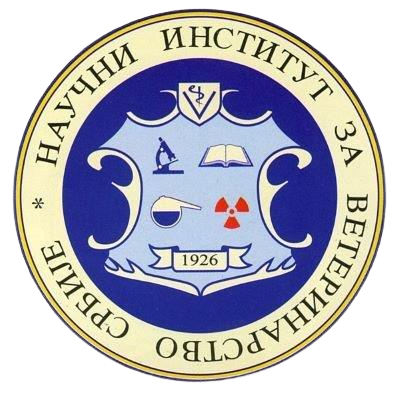Приказ основних података о документу
PCR - dijagnostika infekcije kod svinja koju izaziva Mycoplasma suis
Molecular diagnostics of swine infection caused by Mycoplasma suis
| dc.creator | Potkonjak, Aleksandar | |
| dc.creator | Lako, Branislav | |
| dc.creator | Milićević, Vesna | |
| dc.creator | Savić, Božidar | |
| dc.creator | Ivetić, Vojin | |
| dc.creator | Jakić-Dimić, Dobrila | |
| dc.creator | Stevančević, Ognjen | |
| dc.creator | Toholj, Bojan | |
| dc.date.accessioned | 2023-04-19T11:48:28Z | |
| dc.date.available | 2023-04-19T11:48:28Z | |
| dc.date.issued | 2009 | |
| dc.identifier.issn | 0350-2457 | |
| dc.identifier.uri | https://reponivs.nivs.rs/handle/123456789/141 | |
| dc.description.abstract | Patogena hemoplazma, nazvana Mycoplasma suis (prethodni naziv Eperythrozoon suis) je uzročnik eperitrozoonoze svinja ili ikteroanemije svinja. Uzročnik može inficirati i ljude. Oboljenje je veoma rasprostranjeno u svetu. Najčešća je latentna infekcija svinja izazvana M. suis. Nakon delovanja faktora stresa, oboljenje se klinički manifestuje. Akutni tok se odlikuje pojavom febrilnog stanja i ikteroanemije. Dijagnoza oboljenja se, uobičajeno, postavlja na osnovu epizootiološke ankete, kliničkog pregleda i mikroskopskog pregleda razmaza krvi svinja obojenog, najčešće, po Gimzi. Razvijene su savremene metode molekularne biologije poput PCR, koje su osetljivije i specifičnije u postavljanju dijagnoze infekcije svinja izazvanih M. suis. Primenom PCR testa, ovim ispitivanjem je utvrđeno prisustvo M. suis na farmama svinja u Republici Srbiji. | sr |
| dc.description.abstract | The presence of two types of haemoplasm can be established in the swine population. Pathogenic haemoplasm, named Mycoplasma suis (previously called Eperythrozoon suis) is the cause of swine eperythrozoonosis or swine ichtheroanaemia. The cause of this disease can also infect humans. The disease has spread all over the world. The most frequent form is latent infection of swine caused by M. suis. The disease is clinically manifest following action by the stress factor. The acute course of the disease is characterized by the occurrence of a febrile condition and ichtheroanaemia. The disease is usually diagnosed based on an epizootiological poll, a clinical examination, and a microscopic examination of a blood smear stained most often according to Giemsa. Contemporary methods of molecular biology have been developed, such as PCR, which are more sensitive and specific in making a diagnosis of swine infection caused by M. suis. In these investigations, the presence of M. suis on pig farms in the Republic of Serbia has been determined using the PCR test. . | en |
| dc.publisher | Beograd : Fakultet veterinarske medicine | |
| dc.rights | openAccess | |
| dc.rights.uri | https://creativecommons.org/licenses/by/4.0/ | |
| dc.source | Veterinarski glasnik | |
| dc.subject | svinje | sr |
| dc.subject | PCR dijagnostika | sr |
| dc.subject | Mycoplasma suis | sr |
| dc.subject | Eperythrozoon suis | sr |
| dc.subject | anemija | sr |
| dc.subject | swine | en |
| dc.subject | PCR | en |
| dc.subject | Mycoplasma suis | en |
| dc.subject | Eperythrozoon suis | en |
| dc.subject | diagnostics | en |
| dc.subject | anemia | en |
| dc.title | PCR - dijagnostika infekcije kod svinja koju izaziva Mycoplasma suis | sr |
| dc.title | Molecular diagnostics of swine infection caused by Mycoplasma suis | en |
| dc.type | article | |
| dc.rights.license | BY | |
| dc.citation.epage | 358 | |
| dc.citation.issue | 5-6 | |
| dc.citation.other | 63(5-6): 353-358 | |
| dc.citation.rank | M52 | |
| dc.citation.spage | 353 | |
| dc.citation.volume | 63 | |
| dc.identifier.doi | 10.2298/VETGL0906353P | |
| dc.identifier.fulltext | http://reponivs.nivs.rs/bitstream/id/38/138.pdf | |
| dc.identifier.rcub | conv_79 | |
| dc.type.version | publishedVersion |

